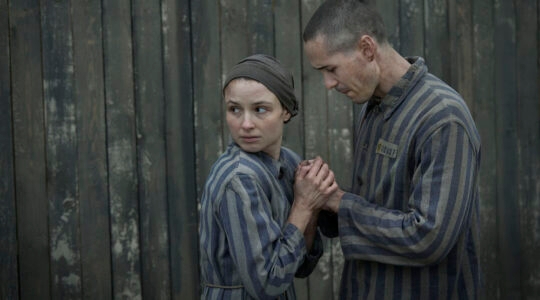I have a few thoughts on Natan Sharansky’s much-heralded plan for resolving the dispute over prayer at the Western Wall.
But first, a quick recap: As things currently stand, if you are facing the most famous/visited section of the Western Wall, you have the men-only section on the left and women-only section on the right. To the right of those two sections is the Mughrabi Bridge, which leads up to the Temple Mount. The wall actually extends past the bridge, to an area known as Robinson’s Arch, where egalitarian groups have been praying for a decade. But the area is an archeological excavation site, is a story or two below the main section and has only been open to worshipers on a limited basis.
OK, enough background. Now to the punditry: [[READMORE]]
1) As today’s news of five more women being detained for wearing prayer shawls underscores, this is not the end. The question is whether it is the beginning of the end or the end of the beginning. No significant Orthodox opposition has emerged to Sharansky’s plan — yet. But even if none does, the plan still could end up in bureaucratic Knesset limbo given that it reportedly would require millions of dollars and several years to implement. In the meantime, expect detentions and negative headlines to continue as Women of the Wall keeps up its monthly prayer service. And we haven’t even discussed the question of whether Muslim authorities will attempt to fight the plan. Plus, even if this means the Kotel controversy is settled, there’s still plenty of other religious pluralism issues to fight over (see 5).
2) At this stage, it probably would be more accurate to call Sharanski’s plan a concept. But, in the spirit of making this commentary seem more significant, we’ll stick to calling it a plan.
3) The Forward asserted that the plan “would allow, for the first time in the history of the modern state of Israel, for men and women to pray together in one section at the Wall and to perform worship rituals not based on the Orthodox interpretation of Jewish tradition.” The Jewish Week quoted Sharansky himself as hailing his plan as “one Western Wall for one Jewish people.”
Well, not exactly.
Egalitarian groups have, with the permission of the government, been using the Robinson’s Arch area for nearly a decade. So there’s nothing new in that regard. The significance of Sharansky’s plan is that it would involve a significant expansion and renovation of the section currently used for egalitarian prayer. Unless the plan ends up involving the complete repositioning/rebuilding of the Mughrabi Bridge, the egalitarian area will remain separate and out of sight from the men-only and women-only sections. So we’re still talking separate, albeit with more “but equal.”
4) What took so long? By all accounts, since Prime Minister Benjamin Netanyahu tapped Sharansky to come up with a solution, the Jewish Agency chairman has done a masterful job in just a few months of starting to forge something like a consensus. But if sprucing up Robinson’s Arch proves to be the solution, there really is no good reason why this couldn’t have happened years ago. Just saying.
5) Is Sharansky’s plan a one-off or the template for a new governmental approach to religious pluralism in Israel? Is this a compromise that will one day be seen as a first step toward equalized funding for Reform and Conservative shuls in Israel, as well as civil marriage and/or government recognition of weddings performed by Israeli Reform and Conservative rabbis?





